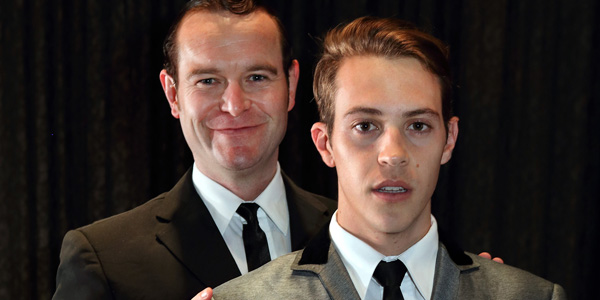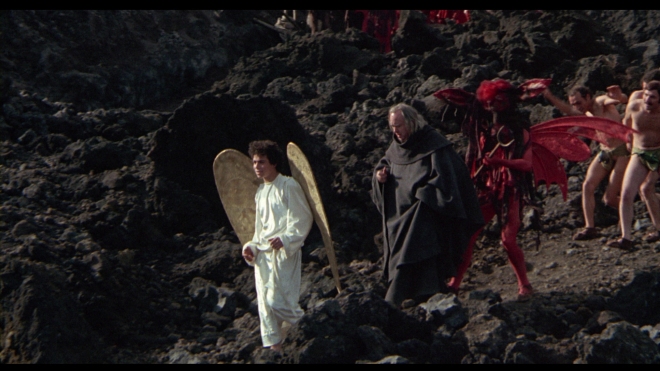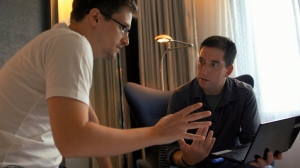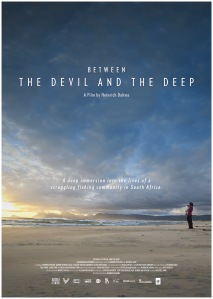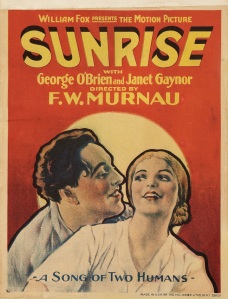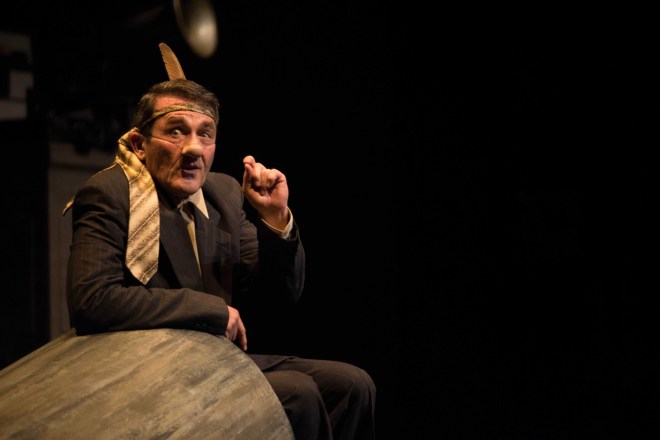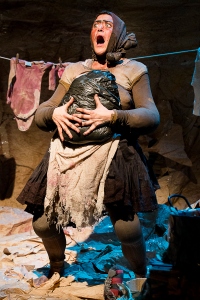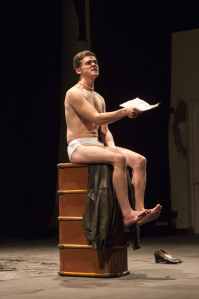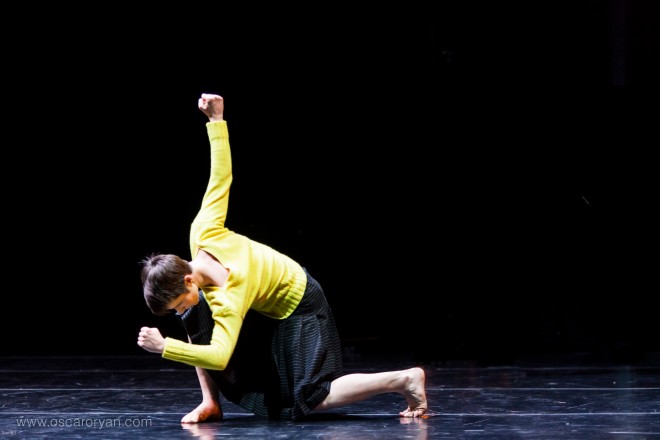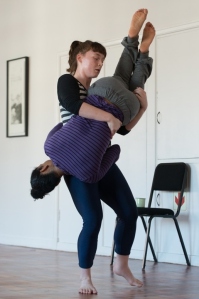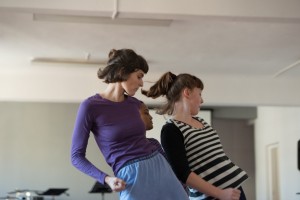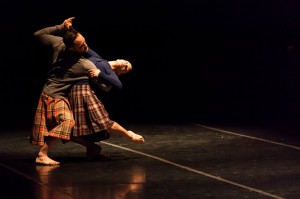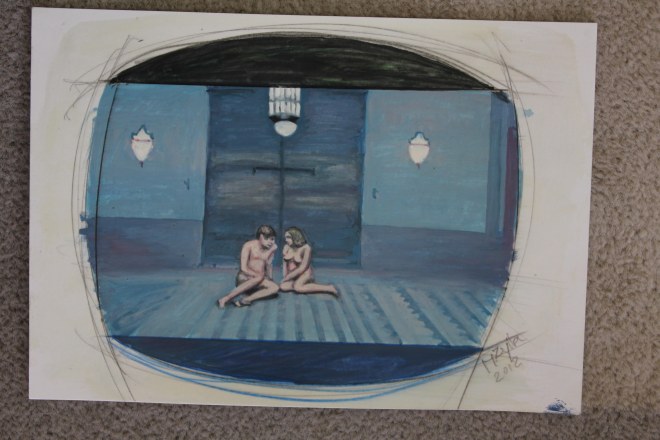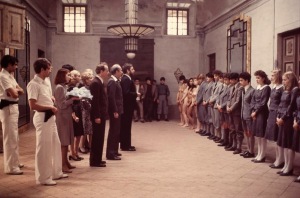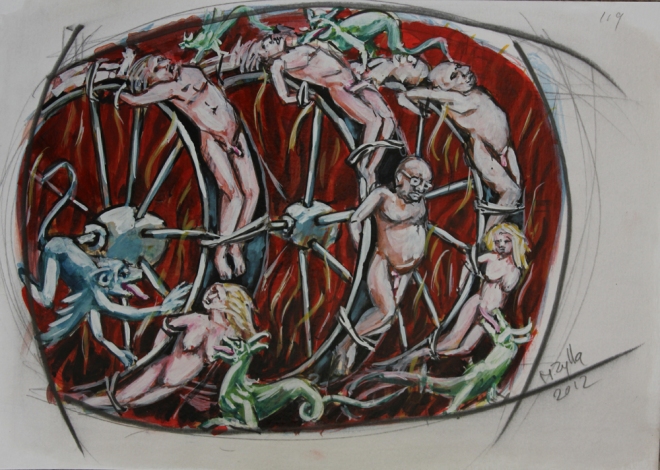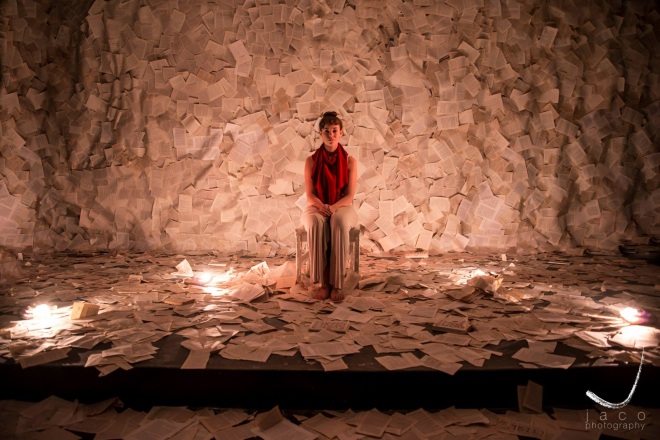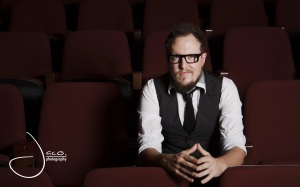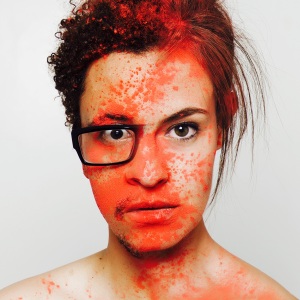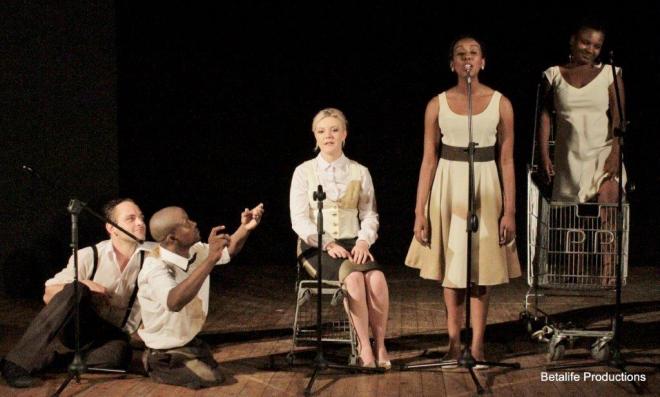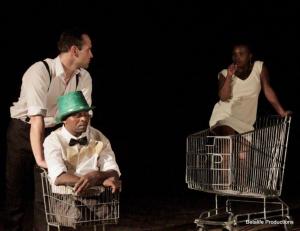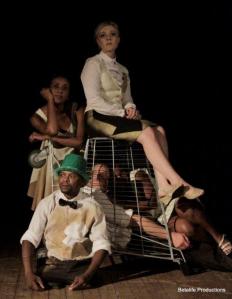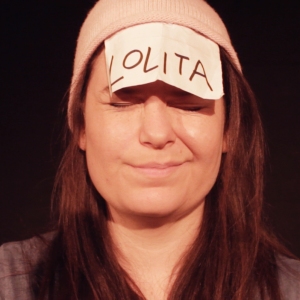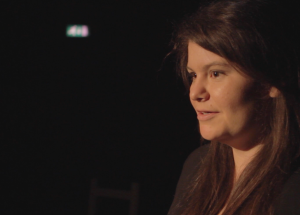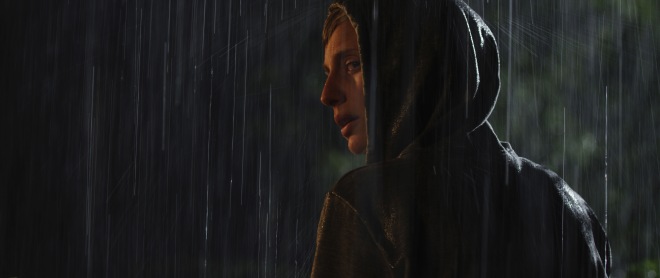
This review was first published in Cape Times on 23 October 2015.
DIS EK, ANNA. Directed by Sara Blecher, with Charlene Brouwer, Morne Visser, Nicola Hanekom, Izelle Bezuidenhout, Marius Weyers, Eduan Van Jaarsveldt, Drikus Volschenk, Hykie Berg and Kara Van Der Merwe. STEYN DU TOIT reviews.
*****
A visibly upset, yet determined-looking woman is driving towards her unknown destination at the start of Tertius Kapp’s Dis Ek, Anna. Chain smoking and clearly affected by a programme on the radio about long-term self-deception as coping mechanism, when also breaking down upon hearing a father send out a dedication to his daughter over the airwaves, the viewer is able to start scooping up the first few pieces of her puzzle.
Based on Anchien Troskie’s top-selling autobiographical novels Dis Ek, Anna and Die Staat Teen Anna Bruwer, the film then sees the woman (played by Charlene Brouwer) arrive at the home of an unnamed couple during the early hours of the morning. Opening the door after being woken up, there is only enough time for the woman to say, “It’s me, Anna”, before she lifts a gun and purposefully pumps the man (Morne Visser) full of bullets.
Directed by Sara Blecher and arriving on circuit after winning Best Director, Best Actor and Best Film at this year’s kykNET Silwerskerm Film Festival, the rest of this acclaimed movie then tries to place Anna’s actions within context, while simultaneously following its immediate repercussions and the effect her act has on everyone involved.
Kapp’s script shows each new piece of information to the viewer without embellishments or euphemisms, with the purpose here not to present matters in black or white, but rather as a series of grey areas in which variables are determined based on culture, religion, oppression, suppression and whatever that thing inside each of us is that ultimately govern our behaviours.
We learn that the man Anna killed was her stepfather, Danie du Toit, and with her mother, Johanna (Nicola Hanekom), turning out to be the woman in the house with him at the time of his death. In addition, Anna does not go into hiding but instead hands herself over to the police immediately afterwards – not only confessing to pulling the trigger but also motivating her actions by saying “someone had to stop him.”
As the film previously received an 18 LV (SV) rating from the Film and Publication Board (FPB) and deals with the horrific topics of child abuse and pedophilia, I am not going to lie and say this is an easy picture to watch. However, given our country’s high statistics around these kind of crimes, and the silence with which these matters usually get treated, I’d also say we are way beyond the point of pussyfooting past reality.
Dis Ek, Anna is a product that the Afrikaans (and local) film industry can truly be proud of – both from a technical point of view as well as in its mature approach to presenting its subject matter to the viewer. This is a film for grown-ups, made without any assumptions about its audience, their intelligence or level of conservatism.
Shot by director of photography Jonathan Kovel and edited by Nicholas Costaras, the cinematography accurately captures the various emotions, internal conflicts and eras of Anna’s life as the plot progresses.
Also included in the visual narrative are several casual observations – presented at times so fast you almost miss it – depicting both cultural and political elements from the periods the film takes place in, as well as observations around the predatory/prey nature of Anna and Danie’s relationship.
Whether restless, playing with light and dark or supplemented by Schalk Joubert’s fantastic score, these technical undertones again demonstrates the overall professionalism and sincerity behind the making of this feature.
Dis Ek, Anna, however, is ultimately a character study and therefore everything boils down to its cast. Made up of a large number of stage and screen icons – including Marius Weyers, Elize Cawood, David Minnaar, Elton Landrew and Ilze Klink – there is not one person that comes across as trying to be bigger than the story or common purpose of the film.
As the film’s lead – from the way she nervously flicks her lighter to the confidence with which she announces herself to Danie – Brouwer is utterly convincing from the start. This will likely be the role this gifted actress will be remembered for for a long time, but hopefully will also open the kind of doors that could allow her to take on equally challenging future roles.
In what must have been incredibly difficult parts to accept given the nature of these characters, both Visser and Hanekom are to be commended for stepping up to the plate as Danie and Johanna respectively.
Visser, in particular, has to dig very deep not only to be able to portray the kind of monster required but also in such a way that it forces the viewer to also wonder what kind of a society we are creating that produces such creatures. I was surprised to learn that, after 20 years in the industry, his win at Silwerskerm was the first award Visser had ever received.
While it would be equally easy to hate Hanekom’s character for her role in Anna‘s whole ordeal, once again the character is played with such flaw and focus that you can’t help but both be disgusted and heartbroken at a woman who can witness a man making advances on her own daughter one moment, yet transform into a giddy girl herself minutes later when, in an attempt to win her back over, proposes to her (in front of said daughter).
A film that finds itself in the ruined lives of broken adults and the sick cycles we as humans seem to perpetuate, finding the cracks of hope that ultimately shine through Dis Ek, Anna is the final reason to not miss this stellar film.
Steyn du Toit is a Cape Town-based freelance arts journalist. For any questions, please e-mail steyndutoit (at) gmail (dot) com.
